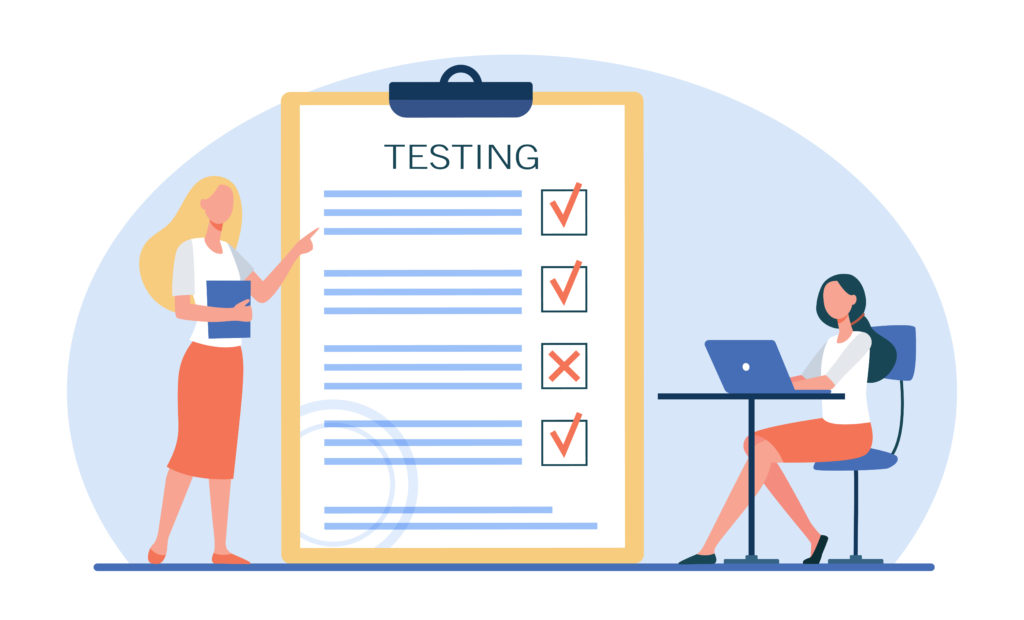
Over time, surveys and questionnaires have gotten mixed up and are used interchangeably. They’re not the same thing. The difference is subtle but important.
A questionnaire is a list of questions used to collect data about someone or something.
A survey is a bit different, Instead of looking at individual questionnaires, it’s used to understand trends, do detailed analysis, and reveal deep insights. The importance of a survey is that it’s collecting data with the express purpose of analysis.
What is a Questionnaire?
A questionnaire is a type of research tool or instrument that consists of a series of questions with the goal of gathering information from respondents, Questionnaires are similar to written interviews in that they collect information, they can be done in person, over the phone, or through the mail.
Questionnaires are a low-cost, rapid, and effective approach to collect significant amounts of data from a big number of people.
Because the researcher is not required to be present while the surveys are completed, data can be obtained fast when conducting interviews with large groups of people is impractical, this method is useful.
Furthermore, a concern with questionnaires is that respondents may lie in order to maintain their social status. Most people want to project a nice picture of themselves, therefore they may lie or stretch the truth to make themselves look better, such as when students inflate their revision time.
Questionnaires can be a cost-effective and quick way to assess the behavior, attitudes, preferences, opinions, and intentions of a large number of people.
To collect data, a questionnaire frequently employs both open and closed questions. This is advantageous since it allows for the collection of both quantitative and qualitative data.
Types of questionnaires
Basically, there are two main types of questionnaires, and the one you’ll use depends on what kind of information you want and the purpose of that information.
- Exploratory questionnaire (qualitative)
Unstructured questionnaires are another name for them. They’re used to gather qualitative data, which is data that can be observed and documented but isn’t numerical. It’s used to characterize and approximate.
Someone giving you feedback on your writing is an example of qualitative data. They may make comments regarding the tone, clarity, and word choice, among other things. It assists you in categorizing your writing, but it does not allow you to assign a numerical value to the criticism.
When you’re in the early stages of a project and want to learn more about a topic before constructing a solution or hypothesis, exploratory questionnaires are great. Exploratory questionnaires, for example, are perfect if you’re in the early stages of product development and don’t know enough about the market. It is crucial to note that some psychologists (e.g., Carl Rogers) were dissatisfied with the scientific research of psychologists such as behaviorists, which led to an interest in qualitative data (e.g., Skinner). Because psychologists examine people, the standard scientific method is not considered an adequate method of research because it fails to capture the whole scope of human experience and the essence of what it means to be human. Examining the impact of A phenomenological method is one that involves participants (re: Humanism).
The goal of qualitative research is to get a sense of an individual’s, group’s, or culture’s social reality as closely as possible to how the participants experience or live it. As a result, individuals and groups are examined in their natural environment. A qualitative method to research is exploratory, attempting to understand “how” and “why” a given phenomenon, or behavior, acts as it does in a certain environment. It can be utilized to come up with hypotheses and theories based on the evidence.
- Formal standardized questionnaire (quantitative)Structured questionnaires are another name for formal standardized questionnaires. These are used to collect quantitative data, which is information that is represented by a count or a numerical value. The information is measurable, which means it may be employed in mathematical or statistical calculations. In essence, it provides a response to the issue of how much, how many, or how frequently something happens. The answer to the following question, “How old are you?” which demands a numerical response, is an example of quantitative data. When you’ve already created an initial hypothesis or built a product prototype, standardized surveys are the ideal option. Before moving forward with product development, you’ll utilize it to stress-test your assumptions, designs, use cases, and so on. The inquiries you ask are confined in scope and seek precise information because of the clear focus. The question types you select are just as crucial as the questionnaire type.
Note that quantitative data is information about quantities, and thus numbers, whereas qualitative data is descriptive and is concerned with phenomena that can be observed but not measured, such as language.
Type of Questions in Questionnaire
Not every inquiry type is appropriate in every circumstance. That’s why it’s crucial to first figure out what kind of questionnaire you’re making. With this knowledge, selecting the appropriate question kinds becomes much easier.
- Open-ended questions:
Open-ended questions are survey questions that allow respondents to respond in open text format, allowing them to express their full knowledge, feeling, and comprehension. It means that the answer to this query isn’t restricted to a few alternatives. Unlike a closed-ended question, which limits survey replies to the alternatives provided, an open-ended question allows you to dig deeper into the responses of the respondents, gaining useful information on the topic at issue. The answers to these questions can be utilized to get more in-depth and descriptive information on a subject.
Qualitative market research relies heavily on open-ended inquiries. This kind of research relies largely on open and subjective questions and responses on a specific topic of discussion, with room for the researcher to probe deeper based on the respondent’s response. Closed-ended questions are commonly used to collect qualitative data from respondents.
- Close-ended questions
Closed-ended questions are those that require respondents to choose from a limited set of pre-defined responses, such as “yes/no” or multiple-choice questions. The questions are commonly used to collect quantitative data from respondents.
Closed-ended inquiries can take many different forms, but they are all defined by the need for a response to choose from a set of stated possibilities
However, based on the survey’s goal, the most appropriate question type should be chosen on a case-by-case basis.
Importance of Questionnaires
- Economical:
It is a cost-effective method of gathering data. In terms of time, effort, and money, it is cost-effective for both the sender and the recipient. The cost of conducting a survey using the questionnaire method is extremely inexpensive. Only the cost of paper printing and delivery must be covered by the researcher when conducting a questionnaire. There is no need to physically visit each and every respondent. As a result, it does not necessitate a high cost for the conduct of the research.
- Wide Coverage:
When the sample population is dispersed throughout a large area, it is arguably the greatest method for gathering data, as opposed to other methods like interviews or observation. It allows for a national or perhaps international reach.
A questionnaire allows you to contact a large number of people who would otherwise be impossible to reach. It has the ability to cover a huge group at once. According to Goode and Hatt, when a researcher needs to cover a large number of respondents in a short amount of time, he or she can employ a questionnaire to save money.
For example, if a researcher wants to survey the membership of the American Sociological Society, interviewing fees would be prohibitively expensive, both financially and in terms of time. It’s possible that there won’t be enough time to do the required interview. However, questionnaires could be issued to all of those individuals, and data could be gathered from them. This can be done by a single researcher without having to spend the significant sums of money that would otherwise be required to hire interviewing staff.
- Rapidity:
In the questionnaire method, responses can be received relatively rapidly. In this instance, there is no need to personally visit the respondent or to continue the study for an extended period of time. Therefore, when compared to other techniques, the postal questionnaire is the fastest.
- Greater Validity:
In terms of information validity, the questionnaire has certain distinct advantages. The dependability of responses in procedures like interview and observation is determined by how the investigator recorded them. They may present their own biased or prejudiced information here. However, in the questionnaire approach, the subjects’ responses are available in their own language and version. As a result, the researcher will not be able to misinterpret it.
- Most Flexible Tool for Data Collection:
A questionnaire is without a doubt the most versatile tool for gathering both quantitative and qualitative data.
